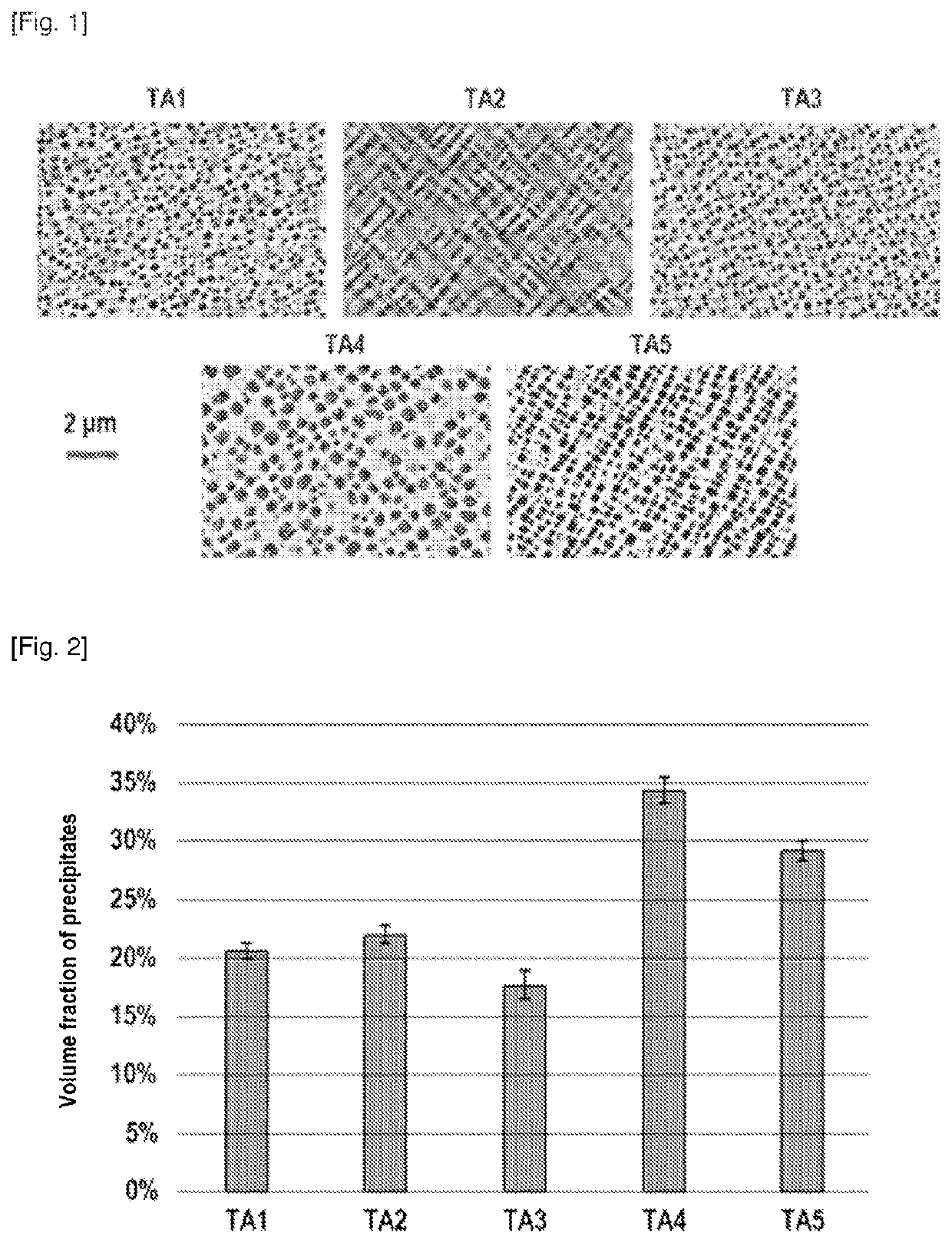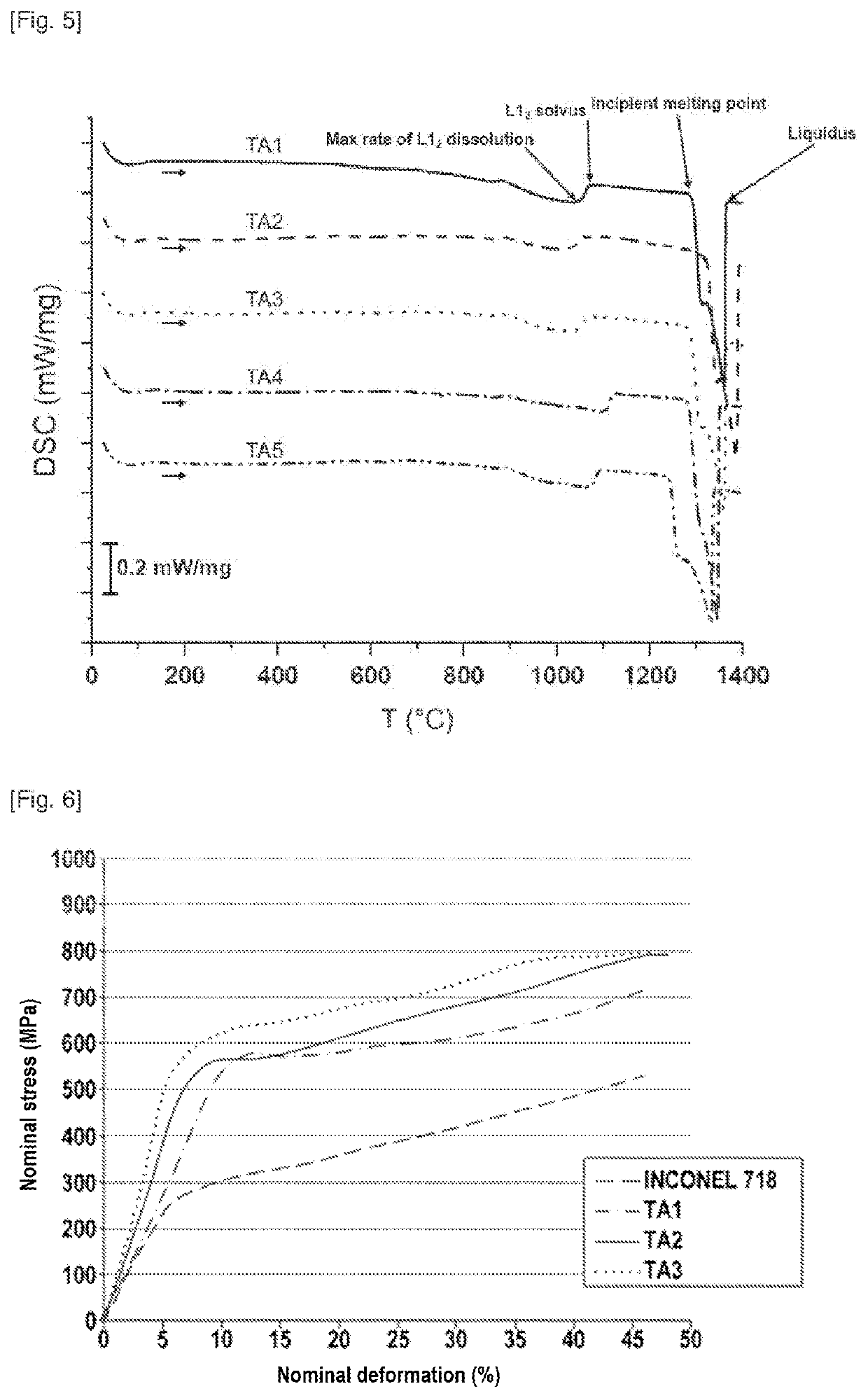Superalloy with optimized properties and a limited density
a superalloy and density technology, applied in the direction of machines/engines, etc., can solve the problems of lowering the mechanical properties of the alloy, affecting the microstructure of the alloy, etc., and achieve the effect of reducing the density, avoiding the negative influence of the mechanical properties at low temperature, and reducing the density of the superalloy
- Summary
- Abstract
- Description
- Claims
- Application Information
AI Technical Summary
Benefits of technology
Problems solved by technology
Method used
Image
Examples
Embodiment Construction
[0063]The inventors have evaluated the performance of several examples of superalloys in accordance with the invention. The various tests that have been conducted will be detailed below.
[0064]The evaluated compositions are detailed in Table 1 below. The contents of the different elements are indicated in atomic percentages.
TABLE 1NiCoCrFeAlTiTA140.016.716.716.75.05.0TA235.035.010.010.05.05.0TA335.025.020.010.05.05.0TA452.54.413.117.57.55.0TA535.021.913.117.55.07.5
[0065]Alloys TA1-TA5 were subjected to a heat treatment in which a first step was imposed at 1150° C. for 48 hours followed by a second step at 900° C. for 403 hours. FIG. 1 shows the microstructure of alloys TA1-TA5 evaluated. The photographs in FIG. 1 show the presence of gamma-prime phase precipitates in each of alloys TA1-TA5.
[0066]Alloys TA1-TA5 were heat treated at 900° C. for a duration of 403 hours. The volume fraction of gamma-prime phase precipitates was evaluated using the following method: automated thresholding...
PUM
| Property | Measurement | Unit |
|---|---|---|
| density | aaaaa | aaaaa |
| mechanical properties | aaaaa | aaaaa |
| resistance | aaaaa | aaaaa |
Abstract
Description
Claims
Application Information
 Login to View More
Login to View More - R&D
- Intellectual Property
- Life Sciences
- Materials
- Tech Scout
- Unparalleled Data Quality
- Higher Quality Content
- 60% Fewer Hallucinations
Browse by: Latest US Patents, China's latest patents, Technical Efficacy Thesaurus, Application Domain, Technology Topic, Popular Technical Reports.
© 2025 PatSnap. All rights reserved.Legal|Privacy policy|Modern Slavery Act Transparency Statement|Sitemap|About US| Contact US: help@patsnap.com



